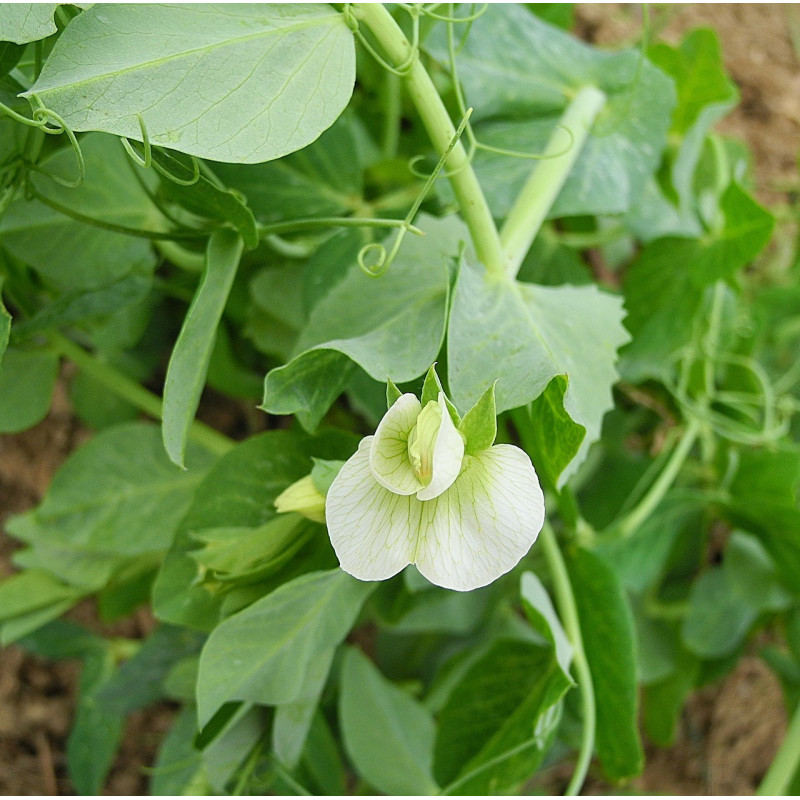



PEA - OREGON GIANT, SNOWPEA, climbing
Pisum sativum var. saccharatum
Oregon Giant is named after the very large edible pods. They sometimes reach12cm long. The plant itself is quite short for a climbing variety and only reaches 90-150cm but the quality of the snowpeas is very high, particularly when eaten very young. This is one of the best snowpea varieties.
Peas should be planted in soil with high organic levels where possible but they do not need high levels of Nitrogen which they can get from the air and fix in root nodules. Plant from Jan-Nov in Cold areas, from Feb-Sept in Temperate areas and from Mar-July in Subtropical and Tropical areas. Plant the seed 2-4cm deep, quite thickly, in rows 35-75cm apart and provide strong trellessing for support of climbing varieties. Pick when small for the best tasting peas and in order to promote greater yields.
QTY 150 seeds
Image by Crepessuzette from Pixabay
 Security policy
Security policy
The site is checked on a regular basis
 Delivery policy
Delivery policy
Seeds are sent within 2 business days of payment receipt,parcels include tracking
 Return policy
Return policy
Items can be returned within 7 days of receipt provided they are in as received condition
PEA - OREGON GIANT, SNOWPEA, climbing
Pisum sativum var. saccharatum
Oregon Giant is named after the very large edible pods. They sometimes reach12cm long. The plant itself is quite short for a climbing variety and only reaches 90-150cm but the quality of the snowpeas is very high, particularly when eaten very young. This is one of the best snowpea varieties.
Peas should be planted in soil with high organic levels where possible but they do not need high levels of Nitrogen which they can get from the air and fix in root nodules. Plant from Jan-Nov in Cold areas, from Feb-Sept in Temperate areas and from Mar-July in Subtropical and Tropical areas. Plant the seed 2-4cm deep, quite thickly, in rows 35-75cm apart and provide strong trellessing for support of climbing varieties. Pick when small for the best tasting peas and in order to promote greater yields.
QTY 150 seeds
Image by Crepessuzette from Pixabay

PEA - OREGON GIANT, SNOWPEA, climbing
Pisum sativum var. saccharatum
Oregon Giant is named after the very large edible pods. They sometimes reach12cm long. The plant itself is quite short for a climbing variety and only reaches 90-150cm but the quality of the snowpeas is very high, particularly when eaten very young. This is one of the best snowpea varieties.
Peas should be planted in soil with high organic levels where possible but they do not need high levels of Nitrogen which they can get from the air and fix in root nodules. Plant from Jan-Nov in Cold areas, from Feb-Sept in Temperate areas and from Mar-July in Subtropical and Tropical areas. Plant the seed 2-4cm deep, quite thickly, in rows 35-75cm apart and provide strong trellessing for support of climbing varieties. Pick when small for the best tasting peas and in order to promote greater yields.
QTY 150 seeds
Image by Crepessuzette from Pixabay